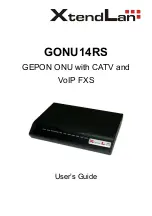
Installing the gateway router
26
SmartNode 4650 Getting Started Guide
3 • SmartNode installation
Installing cables
Connect the cables in the following order:
1.
Connect the ISDN terminals and NT to the BRI ports (see section
“Connecting ISDN terminals and NT
to the SmartNode’s ISDN BRI ports”
).
2.
Connect the 10/100Base-T Ethernet LAN and WAN (see section
“Connecting the 10/100Base-T Ether-
net LAN and WAN cables”
on page 26)
3.
Connect the WAN (V.35, X.21, or DSL) cables (see section
“Installing the WAN cable”
on page 27)
4.
Connect the power mains cable (see section
“Connecting the power supply”
on page 29)
Connecting ISDN terminals and NT to the SmartNode’s ISDN BRI ports
The SmartNode comes with five ISDN BRI ports located on the rear panel (see
figure 2
on page 16). All ports
can be connected to the PSTN (ISDN NT) or terminals.
Note
We recommend connecting the PSTN to
BRI 0/0
and a terminal to
BRI 0/1
to benefit from the lifeline function.
For details on the BRI port pinout and ISDN cables, refer to
Appendix C, “Cabling”
on page 59 and
Appendix
D, “Port pin-outs”
on page 63.
Connecting the 10/100Base-T Ethernet LAN and WAN cables
The SmartNode 4650 has automatic MDX (auto-crossover) detection and configuration on all Ethernet ports.
Any of the ports can be connected to a host or hub/switch with a straight-through wired cable.
1.
Connect to the subscriber port of the broadband access modem (DSL, cable, WLL) to
ETH 0/0
.
2.
Connect port ETH 0/1 to your LAN.
For details on the Ethernet port pinout and cables, refer to
Appendix C, “Cabling”
on page 59 and
Appendix
D, “Port pin-outs”
on page 63.
Do not work on the system or connect or disconnect cables during periods of
lightning activity.
The interconnecting cables shall be acceptable for external use
and shall be rated for the proper application with respect to volt-
age, current, anticipated temperature, flammability, and
mechanical serviceability.
When this device is used in North America, it shall be connected
to a Network Termination Device and not connected directly to
an outside POTS line.
WARNING
CAUTION
CAUTION































